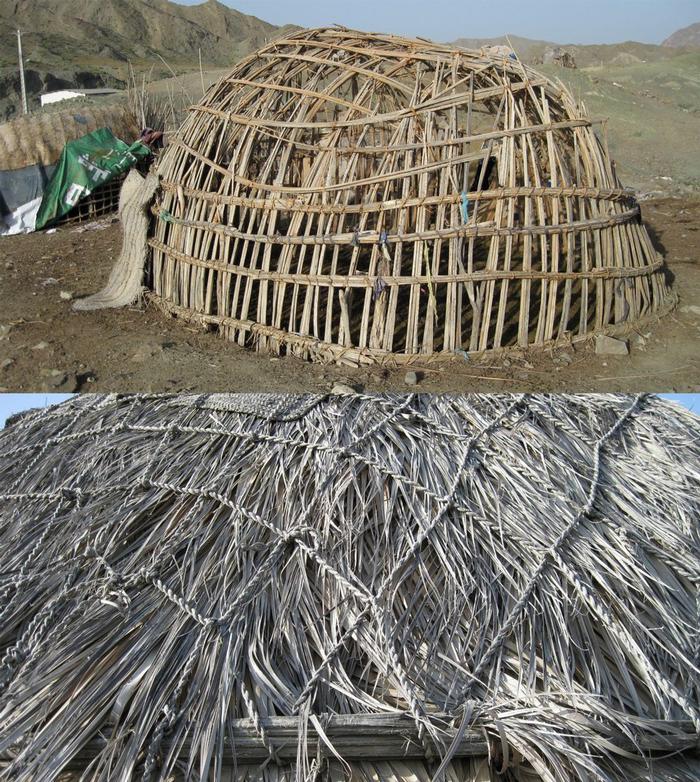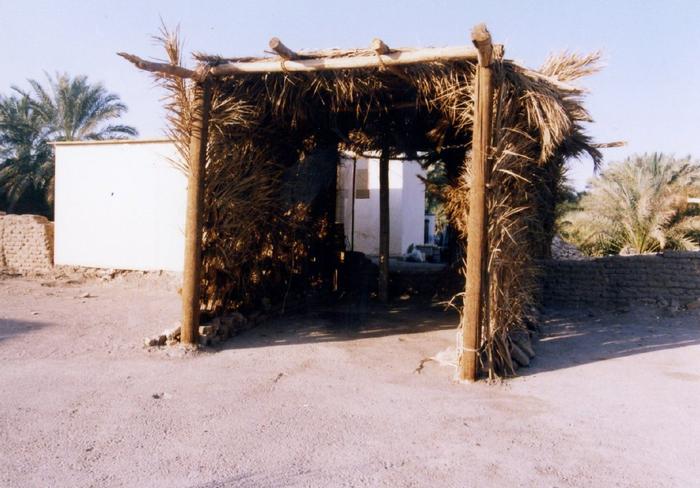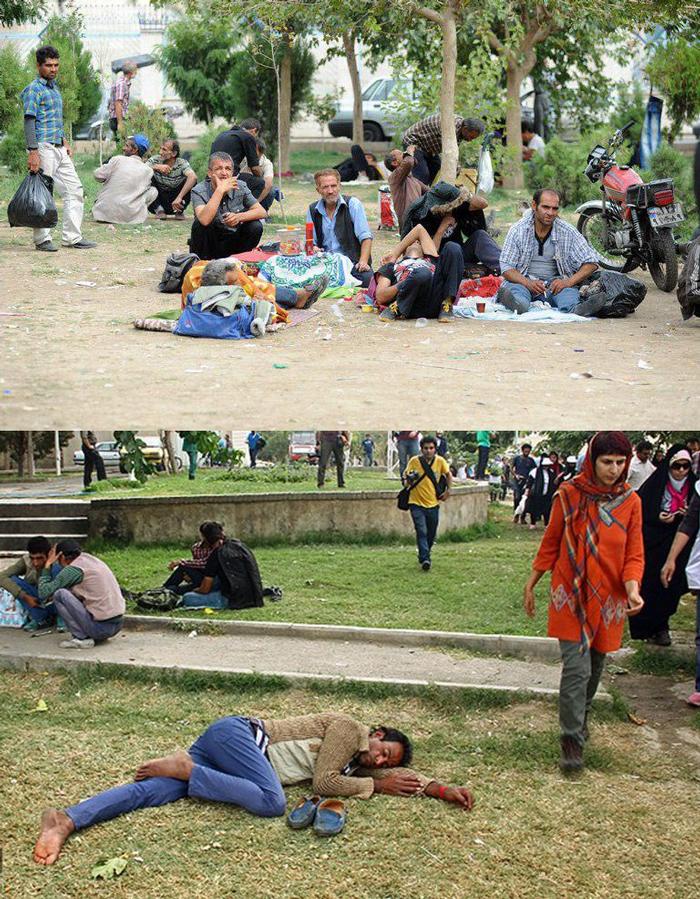Zahra Mossadegh Akrami and Ali Tabatabaei Ghomi EssayWhen Local Architecture Provides a ShelterThe Earthquake “My grandmother lived in a house in the ‘Bagh Khan’ neighborhood, with fifty palm trees in its yard. A garden house, in which her fourteen grandchildren had fourteen swings with little unique worlds for themselves. Us boys, running around and being loud and carefree in the world we felt safe. And girls, you could always find them around our grandmother busy with their dolls. The garden house was truly a member of our family. Now, twelve years have passed since the destruction of our garden house in Bam’s earthquake. Hamed points to a photo and says, “in this photo you can see us walking on rubble looking for our grandparents.” he continues with a heavy heart “I can still feel the burn in my bleeding fingertips while digging into the rubble to this day.” In December 2003, in a cold winter dawn, an earthquake with a magnitude of 6.7 hit Bam, a city that lies on the southern plains of Iran. The official death toll was confirmed at 26,000. 93% of urban buildings were destroyed leaving more than 100,000 people homeless. Until arrival of tents and establishment of emergency camps, People settled around the fire in the ruins of their houses or at the dead end alleys. After a few days several tents were set up to shelter people impacted by the earthquake. Due to the adverse weather conditions, the national and the local authorities decided to move affected families to temporary units until the reconstruction could be completed. By being the focus of national donations, Bam started to attract low-income and homeless families from other nearby towns and villages looking for financial aids and donations. This made the issue of housing even more complicated with two target groups seeking help, one the locals affected by the earthquake, and second the temporary financial migrants. The government adopted different strategies to settle families in temporary units. The main approach was using prefabricated units as temporary shelters. Unfortunately the development of prefabricated units was delayed leaving people to live in tents for another few months in harsh winter. However, a large number of survivors preferred to stay in tents and refused to move to camp sites located far from their destroyed houses. In addition, most of the survivors found living in prefabricated units challenging and unsuitable, with no sense of belonging most of the people could not accept units as their new homes. Meanwhile and prior to construction of temporary units, a group of professionals from Iranian Housing Foundation Organization (HFO) took a different approach. HFO started building reasonable small shelters with the help of locals and using locally available material. The HFO is a governmental organization which is responsible for providing affordable accommodation to low income families, and for post-disaster reconstruction work. After the Earthquake Bam, known as an agricultural city, famous for its dates and citrus fruits is located in southern parts of Iran. While it has been industrialized in last decades, the city is still covered by palm groves and orchards. Palm trees which can be found in most courtyards are culturally considered as the oldest members of a family. In southern regions, housings were commonly built from readily available materials such as straw, mud, palm leaves and branches. In 1967, it was estimated that nearly 20% of houses in southern provinces were comprised of mud huts, cobs and straw-fabric huts. Even today the majority of underprivileged members of Iranian community are still living in this type of accommodation near marshes and canebrakes. Appreciating the importance of finding a prompt and practical way to build temporary accommodation for people of Bam, HFO took it upon itself to overcome this challenge. The First step was to resolve the issue of construction material. Due to the scale of construction work, sourcing material for manufacturing prefabricated units was unfeasible and time consuming. Inspired by the history of the region, HFO engineers started to study old local methods of house building in the region. By using readily available palm leaves and stems, HFO not only eliminated the cost and time required for manufacturing and transportation of prefabricated units, but also benefited from local knowledge and craftsmanship that was passed from a generation to another in the region. HFO engineers developed two types of fit-for-purpose designs benefiting from the light weight and flexibility of natural material. By using locally abundant natural resource, the project employed the craftsmanship of the community. While this provide HFO with an opportunity to utilize locals as laborers, the design was required to be simple and practical to be implemented by people with minimum to none construction background. Using HFO designs, two types of shelters were built with maximum area of 15 meters square. In the first design, the structure was built from palm stems meshed together to form an approximate hemisphere. To create this frame, branches in the middle of palm leaves were tied together to create a weaved fabric approximately 10 to 15 centimeter in diameter. Each of these tied branches with length of 3 to 4 meters is called "Gasab". Then each Gasab was firmly posted in the ground in 1 meter interval from each other on both sides of the structure. Then the upper part of each Gasab was weaved and connected to the opposite Gasab. As the result, paired Gasabs would form a semicircle arch. Then another set of Gasabs were used horizontally to bind and brace those vertical arches. These frames have a length of 5 meters and a width of 3 meters. Afterwards the structure was covered with palm leaves. The shelter had openings at both ends to access. Light and ventilation was provided from pores between the leaves. The same covering technique was used in the second design. However, the structure was made using four pieces of palm timbers. One of the HFO goals was to involve survivors in construction of shelters. The social and sustainable approach adopted by HFO has resulted in development of a design that was not only practical and safe, but also ensured the engagement of affected people in rebuilding their community. The design also enabled community to build their shelters in various configurations to address their specific needs, whether it was to cater their family size or flexibility with style. Various shelters with circular or rectangular plans and diverse covering textures were built. This resulted in construction of good quality shelters in timely manner. It was apparent that this could be only achieved with the effort derived from the people's sense of belonging to where they want to call home. This approach had been used in other regions based on their local materials and techniques, like in Rudbar earthquake in 1990. After the disaster, villagers built shelters using Zegaly system -a specific traditional technique- with the help of HFO. The shelter has a wooden frame. At first wooden columns are erected. Then horizontal beams are connected to vertical beams using hemp ropes. When frame is complete trimmed branches (Zegal) are diagonally tied to main beams every 15 centimeters. A row of Zegals is attached to both internal and external sides of the wall and the space between the two walls is filled in with thatch. This construction method also provides a reasonable resistance against vibration and aftershocks. HFO has been implementing these shelters to provide temporary housing as an alternative to tent camp sites. However, this type of shelter was tested as emergency shelter in a small scale in Bam. Although twelve years have passed since the Bam earthquake, people still recall the disaster and its consequences mournfully. Every survivor has perceived the meaning of displacement based on their own experience. A mother whose child was less than a year old at the time of the event and lived in a tent for two years says: “My son learnt how to walk two years later than other kids; because there was no wall that he could hold on to.” Despite few local shelters in Bam, this approach was an appropriate response to the issue of accommodating people in first days following the disaster. Survivors built local shelters nearby or in the yard of destroyed houses. Some of these shelters are still in use as a barn or storage shed today. Homelessness Ferry is 42-year-old woman, sitting at a bus stop in one of the poor neighborhoods of Tehran capital of Iran. Few meters ahead, a group of people are laying what seems to their beds on the sidewalk. When asked do you guys generally hang out here? Ferry replies “we don’t just hang out here, we do live here, I guess you can call it our home. Whoever has no home comes here. We spend some nights on the street and some nights on the hills near here. Rents are fairly high. With the money we don’t have any rent is actually too high for us. Also most of the money we manage to gets our hands on is spent on drugs. Because of our drug addiction, the Garm-Khooneh (buildings that municipality create to accommodate homeless people, literally warm house) refuses to accept us. And at the end of the day most of us take refuge to drugs to ease the pain on our miserable life.” While providing shelter for people who their homes were a one-off issue in case of Bam earthquake, it is an everyday concern of 15,000 homeless people of Tehran. The main anticipated cause of homelessness in Tehran is the migration of people from rural areas to urban areas in pursuit for a better life. In addition to financial difficulty, social pathologies such as drug addiction have also been one of the main contributors to this issue. With a population of 28, 236, "Shoush" has been one of the worst suburbs in Tehran with respect to everyday violence and crime rate. Old families gradually moved out due to these problems. Shoush, while recognized as one of the oldest and culturally rich suburbs in Tehran, with 8,000 homeless it is probably the most impacted suburbs in Tehran in this respect. All these social issues have resulted in formation of a secluded and isolated community from society that has attracted more homeless people to this neighborhood. Several schemes have been proposed to overcome issues in Shoush, some has been put to practice with little success while most have failed to improve the situation. Failing to address the social aspect of this problem and understanding the need for grassroots effort to solve the issue has resulted in failure of most of these initiatives. Inspired by HFO local shelters, we believe temporary and cost-effective local shelters can be set up in the nearby hills where many of homeless people are gathered to spend the night. While we appreciate that this will not be “the” solution to their homelessness, it will offer a better quality accommodation compared to shacks cobbled together from cardboard or plastic sheets which hardly last a single night. The humanitarian organizations fighting against drug addiction and homelessness in Tehran can take action on creating opportunities to build these shelters in feasible parts of the hills. Teaching construction techniques to homeless people is requisite for implementation of this proposal, so they can build shelters themselves. However, this proposal cannot be simply considered as a practical solution for Shoush homelessness issue until it is accompanied by social studies.The main difference between homelessness in Shoush neighborhood Vs. Bam is the origin of the problem. Social harms, specifically drug addiction is the main reason of homelessness in Shoush. Most of homeless people are addicted to some kind of drugs in Tehran. They have no motivation to even try to provide them with better accommodation. Meanwhile, a number of NGOs in Tehran have recognized the social role of each individual in improving homelessness issue. After having an unpleasant experience in Shoush neighborhood, Ali Heidari, a manager at an advertising company in Tehran, came up with the idea to create a group called “Ending Homelessness”. He explains “I was carrying 15 meals for homeless people for the first time. When I got there, I was shocked by what I saw.” He says “I walked to two people to put food containers next to them when I just realized they were dead. I saw them dead with my own eyes. In Tehran some people are starving to death!” Although the motto for Heidari group is to end homelessness, but he understands that before building a shelter they should secure basic needs such as food, clothing and also a new attitude in order to return homeless people to society. He believes that the special condition of homeless people life have deprived them from all opportunities for participation in society. There is a strong and complex relationship between homelessness and social exclusion. Homelessness is caused by social exclusion and can also be the reason of it. Following the goal of ending homelessness, NGOs have focused their activities in areas such as health, education, employment, shelter and reintegration. One of the activities that the NGO has started is placing kiosks next to a wall in different neighborhoods, which includes a refrigerator, wardrobe and bookshelf. People put their donated foods and clothes in it for destitute people. On the wall next to the kiosk it is written “If you don't need it, leave it. If you need it, take it”. Until now more than hundred of "kindness wall" have been built in 21 cities. The NGO along with the weekly food distribution, tests homeless people for diseases such as HIV. Heidari says “after some time of communicating with homeless people and dealing with their issues, many of them have shown interest in overcoming drug addiction. They ask for help and we accompany them through this way.” He shows a picture on his cellphone, “This is a photo of Hessam from a year ago. I met him for the first time wandering in street. Have a look at his photo now, it is the same Hessam, but he has overcome his drug addiction. Now we are trying to find a job for him. We keep people in our rehabilitation center up to six months after overcoming addiction. But now it has reached to its capacity. Since there is no home waiting for them, they have to go back to the streets and subsequently they start using drugs again.” The combination of HFO design approach and the social motivation created by "Ending Homelessness" can alleviate the homelessness issue. Motivating homeless people, especially the ones who try to quit drugs in order to find a shelter for themselves, will stimulate a passion for life. It is also a major step towards the improvement of their life quality. These shelters do not meant to be a permanent house but a place where they can live while transiting to a better life. As Heydari says: “we are not doing anything special. We are just paying our debt to society. If we have homeless people in Iran, it’s because at some point we were not caring enough about our people.” Additional Help and InformationAre you in need of assistance? Please email info@berkeleyprize.org. |




